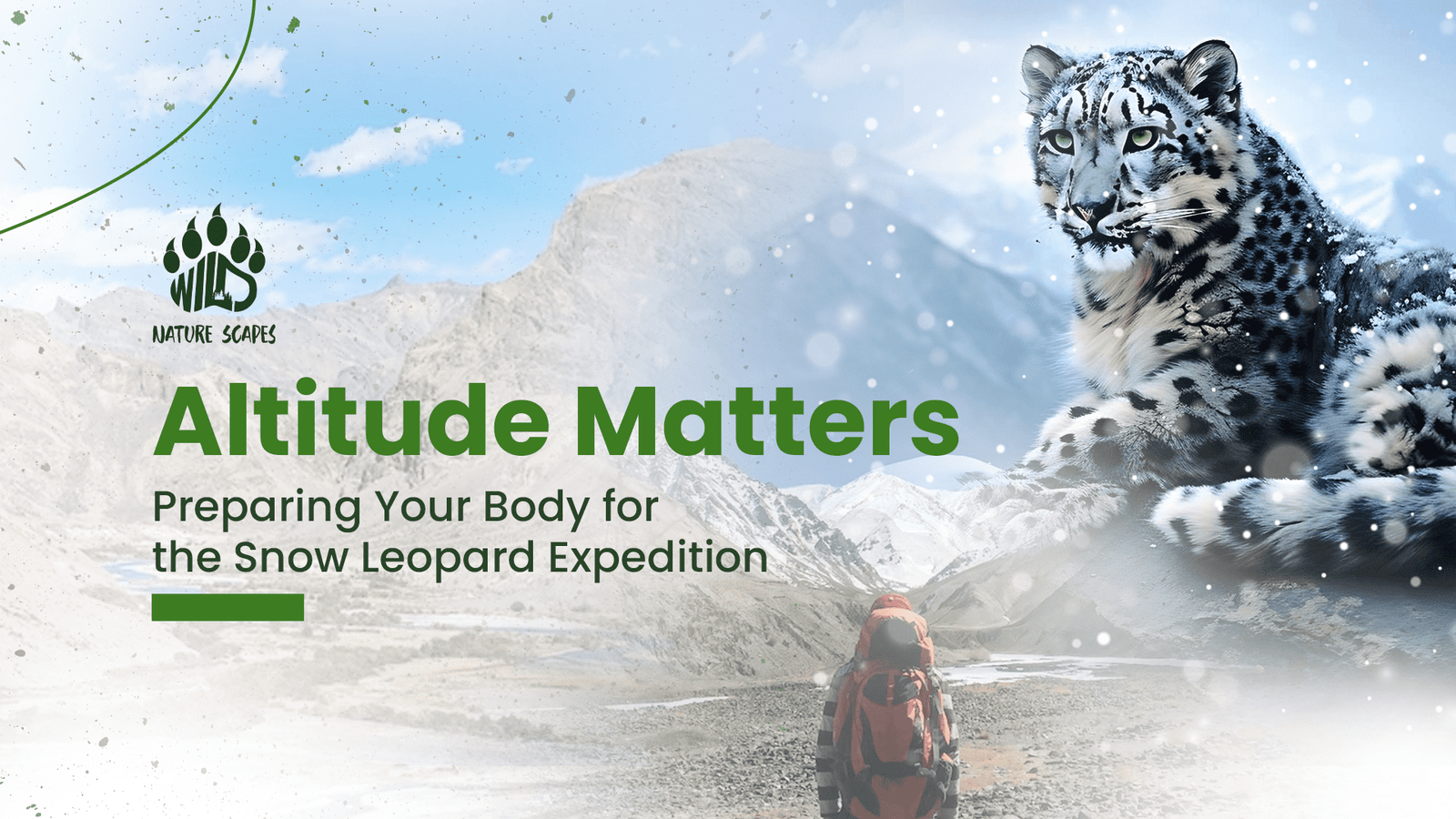The call of the wild, the thrill of tracking the elusive snow leopard in the heart of the Himalayas—it’s an adventure dreams are made of. The stark, rugged beauty of Spiti Valley and the promise of witnessing this enigmatic big cat in its natural habitat are enough to make anyone’s heart race. Yet, these high-altitude terrains come with their own set of challenges, and understanding how to prepare your body is the key to ensuring your snow leopard expedition is memorable and safe.
At Wild Nature Scapes, we aim to provide you with a thrilling adventure tour while at the same time ensuring that you are safe and well. In this blog, we will run you through a few guidelines that will help you prepare for this adventure.
A Closer Look at Spiti Valley
Spiti Valley, nestled within the mighty Himalayan range, is a world unto itself. The region’s stark, lunar-like landscapes, ancient monasteries, and warm-hearted inhabitants make it a captivating destination. Our tour takes you to the Chicham and Kibber area, a mesmerizing part of Spiti Valley.
Chicham: Perched at an elevation of 4,100 meters (13,450 feet), Chicham is known for its breathtaking suspension bridge that connects the two villages of Chicham and Kibber. The bridge itself is an engineering marvel, hanging precariously above a deep gorge, and offers panoramic views of the surrounding peaks.
Kibber: Often referred to as the “Highest Motorable Village in Asia,” Kibber sits at an altitude of 4,205 meters (13,796 feet). The village boasts traditional Spitian architecture, and its vistas of snow-clad peaks are nothing short of awe-inspiring.
The Altitude Challenge
Before we embark on essential tips for preparing your body for the snow leopard expedition, it’s crucial to understand the impact of high altitudes on your physiology. While the Chicham and Kibber areas aren’t the highest points in the Himalayas, they still sit well above most people’s comfort zones. These elevations can also lead to a condition known as Acute Mountain Sickness (AMS) or altitude sickness.
AMS Symptoms include
- Headache
- Nausea
- Fatigue
- Dizziness
- Shortness of breath
- Difficulty sleeping
AMS can range from mild to severe. But do not let that discourage you! With proper acclimatization and some precautions, you can mitigate the risks and fully enjoy your snow leopard expedition. In these conditions, your body needs time to adapt, and not giving it the chance to acclimatize properly can result in discomfort. So,how do you prepare?
Preparing Your Body for Altitude
- Cardiovascular Conditioning:Engaging in regular cardiovascular exercises, such as brisk walking, cycling, or swimming, can help enhance your body’s ability to utilize oxygen efficiently.
- Stay Hydrated:Hydration is key at higher altitudes. It not only helps with acclimatization but also reduces the risk of altitude-related headaches. Aim to drink at least 3-4 liters of water daily during your expedition.
- Fuel Your Body:Consuming a balanced diet rich in carbohydrates, proteins, and healthy fats provides the energy your body needs to cope with altitude. Spiti Valley offers delectable local cuisine; indulge in it to keep your energy levels up.
- Medication: Consult your healthcare provider about medications that can help with altitude-related symptoms. While Spiti Valley isn’t excessively high, it’s always best to be prepared. Basic over-the-counter medications for headaches and indigestion can be handy.
- Gradual Ascent: Allow your body to acclimatize by spending two days at a lower altitude to ease into transition. It’s not about rushing to the highest point; it’s about embracing the journey.
- Listen to Your Body:Pay attention to how your body responds to the altitude. If you experience headaches, nausea, or fatigue, it’s essential to communicate with your guide. Rest when needed and don’t hesitate to take it slow. The mountains aren’t going anywhere.
Staying Safe and Sound
While you’re preparing your body for the challenges of high altitudes, it’s equally important to take care of a few other aspects. Some of them are.
Dress in Layers: Layered clothing helps you regulate your body temperature as you ascend and descend. A good rule of thumb is the three-layer system: a moisture-wicking base layer, an insulating middle layer, and a waterproof and windproof outer layer.
Sun Protection: At high altitudes, the sun’s rays are more intense. Wear sunscreen with a high SPF, sunglasses, and a wide-brimmed hat. Protect your lips with lip balm containing SPF.
Stay Warm: Even in summer, temperatures can drop significantly at night. Pack warm clothing, including a down jacket, gloves, and a beanie. Ensure you have a quality sleeping bag suitable for cold nights.
Follow Your Guide: Your local guide is your best resource for safety and navigation in the mountains. Follow their advice and instructions diligently. In the event of adverse weather or other challenges, trust their judgment on whether to continue or turn back.
Respect the Environment: The pristine Himalayan environment is fragile. Dispose of waste responsibly and avoid disturbing wildlife. Leave no trace of your presence; let’s ensure these beautiful landscapes remain unspoiled for future generations.
Conclusion
A snow leopard expedition in the Himalayas promises an adventure of a lifetime. The stunning landscapes, unique wildlife, and the thrill of high-altitude exploration are unparalleled. However, the key to an enjoyable and safe journey lies in understanding and respecting the challenges posed by altitude.
By preparing your body, recognizing the symptoms of altitude sickness, and following the tips provided, you can make the most of your snow leopard expedition. Remember, it’s not just about the destination; it’s about the incredible journey that leads you there. Altitude matters, but with the right precautions, you can conquer these heights and create lasting memories amidst the towering peaks of the Himalayas. Your adventure awaits, and the mountains are calling!
 WildNatureScapes
WildNatureScapes